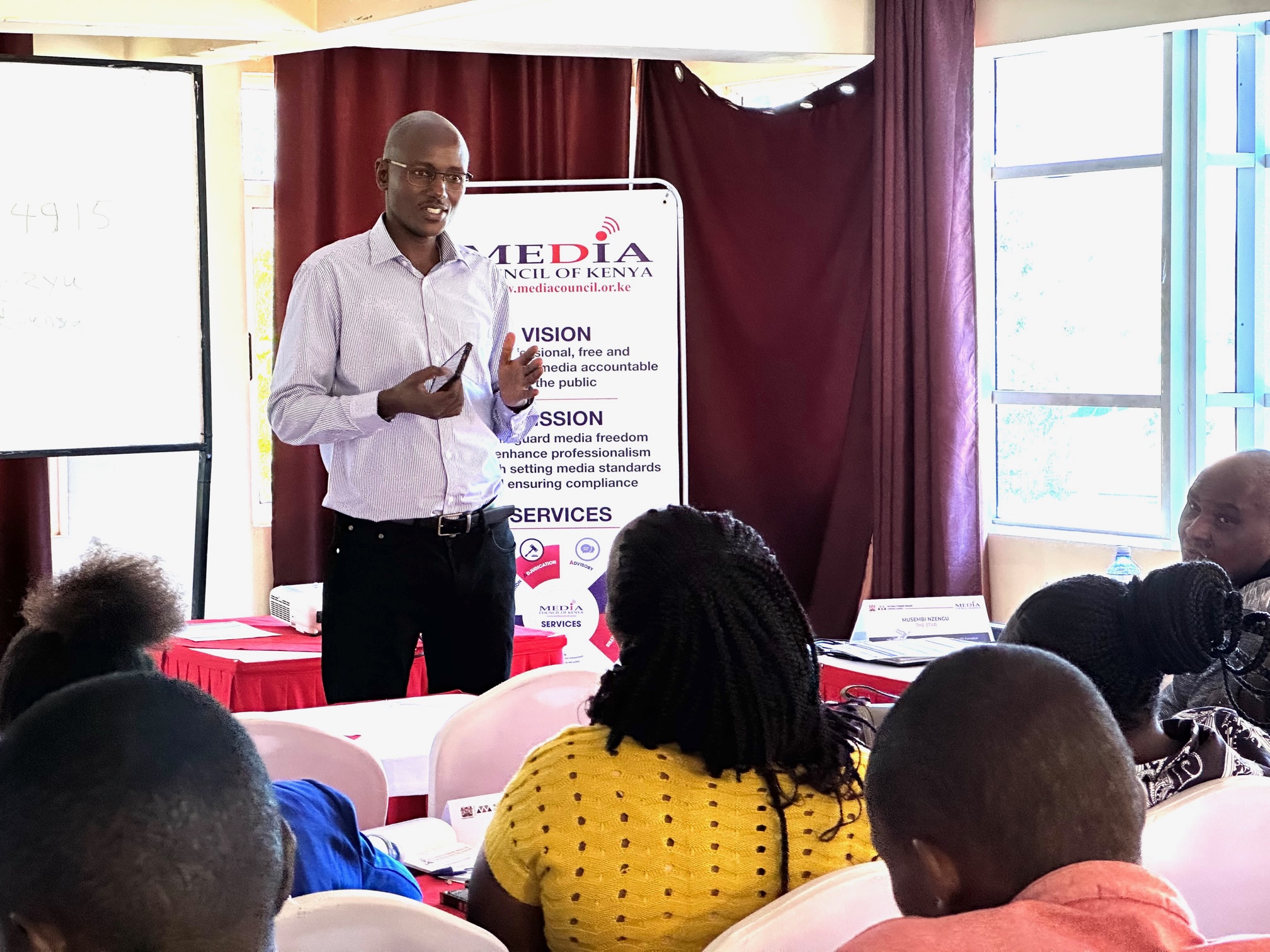
The Media Council of Kenya has urged journalists to adopt creative reporting in writing overtold stories in the fight against HIV/AIDS.
MCK’s Senior Officer for Training Standards and Curriculum Development Julius Sigei who spoke at a session with Kitui-based journalists underscored the importance of incorporating data in telling stories to elicit behaviour change among the youth.
“Data is a unique aspect that can be used in storytelling to bring out the accuracy of an issue and compel people to change. This will also prompt policy makers to come up with better laws aimed at reducing new infections among the youth”, he said.
He asked the journalists to practice solution-based journalism and report on stories that bring hope to the people,
“HIV/AIDS reporting is beyond talking about the people. It includes issues around social economic, cultural, political and the science behind it. Let us look at these areas and bring out stories that will give hope and minimise harm to the people”, said Mr Sigei.
Mr Sigei implored the journalists to develop timely stories around events when the youth are mostly vulnerable to the triple threat of new HIV infections, teen pregnancies and gender-based violence among adolescents and young people.
“Your stories should be based on the key events in the calendar year. Be as creative as possible to create an impact on the youth especially during the holiday and school opening season”, he said.
He encouraged the scribes to adhere to the Code of Conduct for the Practice of Journalism in Kenya to avoid ethical implications associated with reporting stories that cause stigma and shame to the victims.
Dr Stephen Mutuku from the National Syndemic Disease Control Council (NSDCC) reiterated the need for investigative stories on the causes of new infections among the youth.
“I urge you to do more investigative stories on the causes of new infections as the country has witnessed an increase of 7.3% in 2021 from 32,027 in 2020 to 34,540 in 2021”, noted Dr Mutuku.
He emphasised the need to reduce stigma by asking the journalists to encourage those affected to take medication as this was geared towards achieving the global targets.
He noted the critical role of the media in the society and asked the journalists to highlight issues on mother- to- child transmission as well as drug abuse among the youth as a measure of prevention of the new infections.
The training was part of a collaboration between the Media Council of Kenya and the National Syndemic Disease Control Council to sensitie journalists on the triple threat in the fight against HIV/AIDS in Kenya.